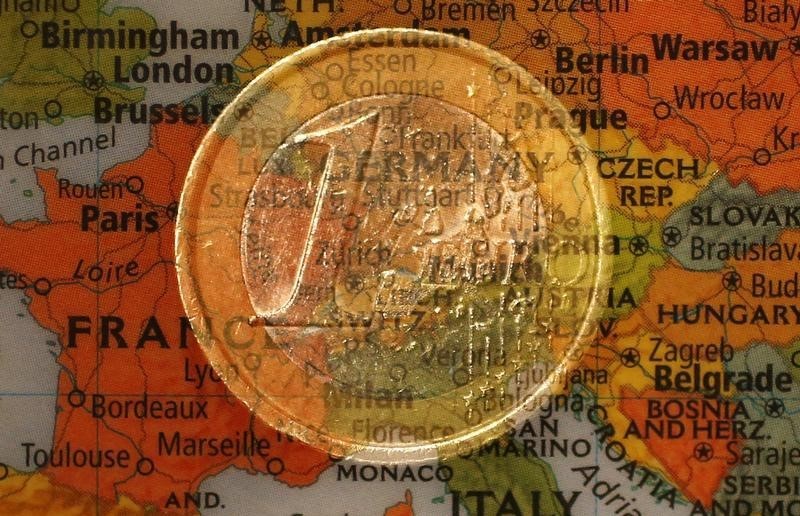Investing.com - The euro pared gains against the U.S. dollar on Friday, pulling away from a two-and-a-half week high after the release of downbeat euro zone inflation data, although a strong economic growth reading lent support to the single currency.
EUR/USD pulled back from 1.1414, the pair’s highest since April 12, to hit 1.1384 during European morning trade, still up 0.28%.
The pair was likely to find support at 1.1296, Thursday’s low and resistance at 1.1466, the high of April 12.
Eurostat reported on Friday that euro zone consumer price inflation fell by 0.2% this month, worse than expectations for a 0.1% decline, and following a final reading of 0.0% in March.
Core CPI, which excludes food, energy, alcohol, and tobacco costs increased by 0.8% in April, below forecasts for 0.9% and down from 1.0% a month earlier.
A separate report showed that the euro area’s gross domestic product rose 0.6% in the first quarter, up from 0.3% in the three months to December and beating expectations for a growth rate of 0.4%.
On a year-on-year basis, the bloc’s GDP rose 1.6% in the first quarter, exceeding expectations for an expansion of 1.4% and unchanged from the previous quarter.
Meanwhile, the dollar remained broadly lower after the Bank of Japan chose on Thursday to hold its monetary policy, defying market expectations for additional monetary easing.
The decision came a day after the Federal Reserve left interest rates unchanged close to zero on Wednesday and offered little guidance on future rate hikes.
Market participants were looking ahead to U.S. data on employment costs, personal spending and consumer sentiment due later Friday, for further indications on the strength of the economy after data on Thursday painted a mixed picture.
The euro was also higher against the pound, with EUR/GBP gaining 0.40% to 0.7802.
